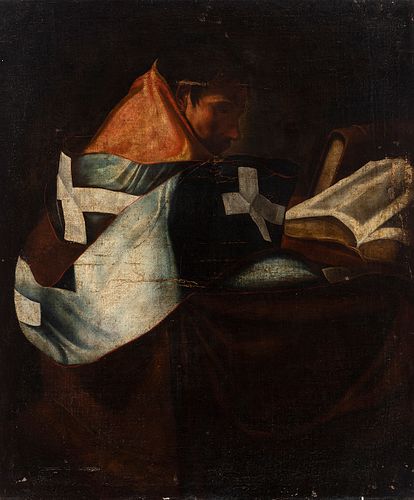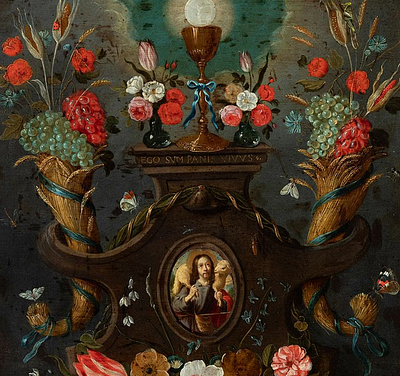Spanish school: 17th century. "Saint". Oil on canvas. Relined.
Lot 51
About Seller
Setdart Auction House
Carrer Aragó 346
Barcelona
Spain
Setdart Subastas was born in 2004 and is currently the first online art auction in Spain with solidity, prestige and reliability guaranteed by our more than 60,000 users. Setdart has a young, dynamic and enterprising team ready to successfully manage the purchase and sale of art works through custom...Read more
Estimate:
EUR€800 - EUR€1,000
$860.22 - $1,075.27
Absentee vs Live bid
Two ways to bid:
- Leave a max absentee bid and the platform will bid on your behalf up to your maximum bid during the live auction.
- Bid live during the auction and your bids will be submitted real-time to the auctioneer.
Bid Increments
| Price | Bid Increment |
|---|---|
| EUR€0 | EUR€10 |
| EUR€200 | EUR€25 |
| EUR€500 | EUR€50 |
| EUR€1,000 | EUR€100 |
| EUR€3,000 | EUR€200 |
| EUR€5,000 | EUR€500 |
| EUR€10,000 | EUR€1,000 |
| EUR€20,000 | EUR€2,000 |
| EUR€50,000 | EUR€5,000 |
About Auction
By Setdart Auction House
Sep 21, 2021
Set Reminder
2021-09-21 10:00:00
2021-09-21 10:00:00
America/New_York
Bidsquare
Bidsquare : 21st September - ARAS JÁUREGUI Private Collection - Old Masters, 19th & 20th Century
https://www.bidsquare.com/auctions/setdart-auction-house/21st-september---aras-j-uregui-private-collection---old-masters-19th-20th-century-7429
Setdart Auction House sofia@setdart.com
Setdart Auction House sofia@setdart.com
- Lot Description
Spanish school: 17th century. "Saint". Oil on canvas. Relined. It presents faults and repainting. Measurements: 102,5 x 86,5 cm. Devotional painting, in which the artist has collected a male portrait. The figure is inscribed in an interior made up of dark tonalities, where there is no other element that distorts the viewer's view, with respect to the main figure, except for the big book that is placed in the right area of the composition. Furthermore, due to the dimensions and monumentality conferred by the artist, the figure occupies a large part of the pictorial surface. Despite being a male portrait without any other identifying attributes, it is possible to appreciate that this is a religious representation, firstly from the clothing, in which the cloak stands out, and secondly from the posture adopted by the sitter, next to the book. Spanish Baroque painting is one of the most authentic and personal examples of our art, because its conception and form of expression arose from the people and their deepest feelings. With the economy of the state in ruins, the nobility in decline and the clergy heavily taxed, it was the monasteries, parishes and confraternities of clerics and laymen who encouraged its development, with the works sometimes being financed by popular subscription. Painting was thus obliged to express the prevailing ideals in these environments, which were none other than religious ones, at a time when Counter-Reformation doctrine demanded a realistic language from art so that the faithful could understand and identify with what was depicted, and an expression endowed with an intense emotional content to increase the fervour and devotion of the people. Religious themes were therefore the preferred subject matter of Spanish sculpture during this period, which in the early decades of the century was based on a priority interest in capturing the natural world, gradually intensifying throughout the century in the depiction of expressive values.
- Shipping Info
-
In-house shipping available. Please inquire at admin@setdart.com.
-
- Buyer's Premium



 EUR
EUR CAD
CAD AUD
AUD GBP
GBP MXN
MXN HKD
HKD CNY
CNY MYR
MYR SEK
SEK SGD
SGD CHF
CHF THB
THB
















